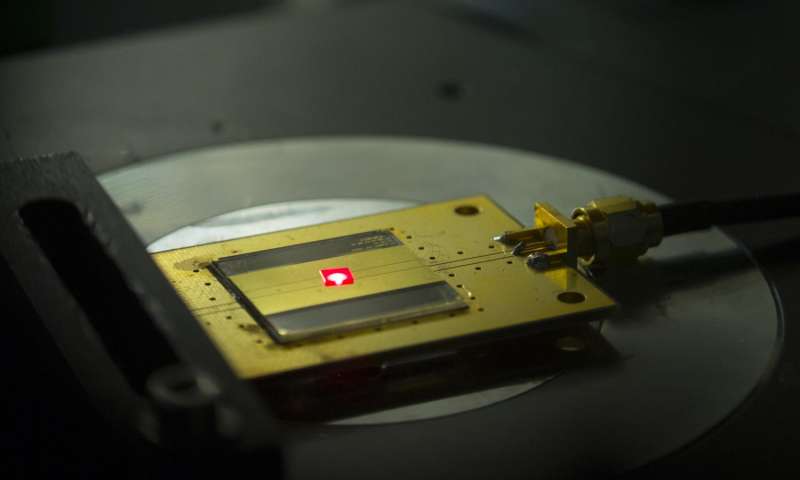World's Tiniest Radio Receiver Created From Diamond The Size Of Two Atoms
A team of engineers from Harvard have become successful in creating the world's tiniest radio receiver. It's made entirely from atomic-scale imperfections in a single piece of diamond crystal. The thing to wonder about it is that, these imperfections are the size of just two atoms. To put the entire process in simple words - Electrons inside these atoms, which are powered by laser-emitted green light, receive radio waves and convert it into red light. A simple photo-diode converts the red light into electric current. Similar to a traditional radio, speakers are used to convert the current into sound. It's important to note here that - because diamonds are so strong, the radio can withstand extreme temperatures and pressures. The scientists believe that, one day this technology can be used to communicate in space or in extremely harsh environments.

How does it all work?
Prof. Marko Loncar from Electrical Engineering department at SEAS, and his graduate student Linbo Shao came up with the idea to make use of nitrogen-vacancy centers (in other words - defects inside tiny pink diamonds). These defects are created in diamonds by replacing one carbon atom with one nitrogen atom and putting a hole next to it by removing an atom beside it.
These nitrogen-vacancy centers (NV centers) are capable of detecting weak magnetic fields and emitting single photons - two applications that make them great for potential use in the fields of quantum computing, sensing and photonics.
The duo from Harvard made use of billions of such NV centers for boosting the signal. However, the radio worked with a single NV center. Thanks to the property of diamonds of being extremely tough, the radio receiver created from it is extremely resilient. The team could play music at temperatures as high as 350 degree Celsius.
We await for the time when this technology finds it way into mainstream advanced applications such as in human heart's pacemakers or sending probes on Venus. Take a look at the following short explanatory video to understand it all -
What are your thoughts about the applications of a radio receiver as tiny as this? Share with us in comments below.
Source: #-Link-Snipped-#

How does it all work?
Prof. Marko Loncar from Electrical Engineering department at SEAS, and his graduate student Linbo Shao came up with the idea to make use of nitrogen-vacancy centers (in other words - defects inside tiny pink diamonds). These defects are created in diamonds by replacing one carbon atom with one nitrogen atom and putting a hole next to it by removing an atom beside it.
These nitrogen-vacancy centers (NV centers) are capable of detecting weak magnetic fields and emitting single photons - two applications that make them great for potential use in the fields of quantum computing, sensing and photonics.
The duo from Harvard made use of billions of such NV centers for boosting the signal. However, the radio worked with a single NV center. Thanks to the property of diamonds of being extremely tough, the radio receiver created from it is extremely resilient. The team could play music at temperatures as high as 350 degree Celsius.
We await for the time when this technology finds it way into mainstream advanced applications such as in human heart's pacemakers or sending probes on Venus. Take a look at the following short explanatory video to understand it all -
Source: #-Link-Snipped-#
Replies
You are reading an archived discussion.
Related Posts
Asus has made available its Zenfone 3 Max (ZC553KL) variant in the country priced at INR 17,999. Offered in 3 variants of Sand Gold, Titanium Gray and Glacier Silver the...
Facebook is late but it’s taking on the biggies like Skype with a new feature debuting on its desktop platform. TechCrunch has discovered that Facebook is allowing a small number...
Google Search app on Android is getting ready for some major changes. A report on Android Police has unearthed new features that could make searching faster for users with spotty...
Fighting Antimicrobial Resistance With A Smartphone Could Soon Be A Reality, Thanks To UCLA Research
When the scientific communities around the globe point towards the technological singularity, the growth in research seems to misfit the expectations. The coupling of medical science with engineering has generated...
Before beam balance an other instrument for measuring mass of a substance existed....how was mass measured
